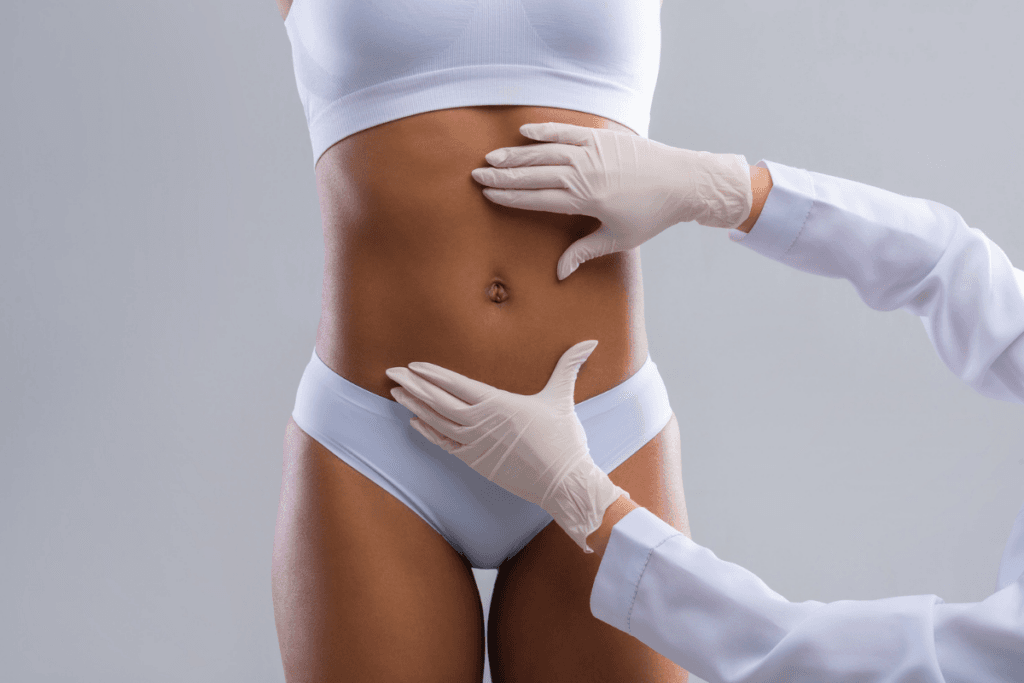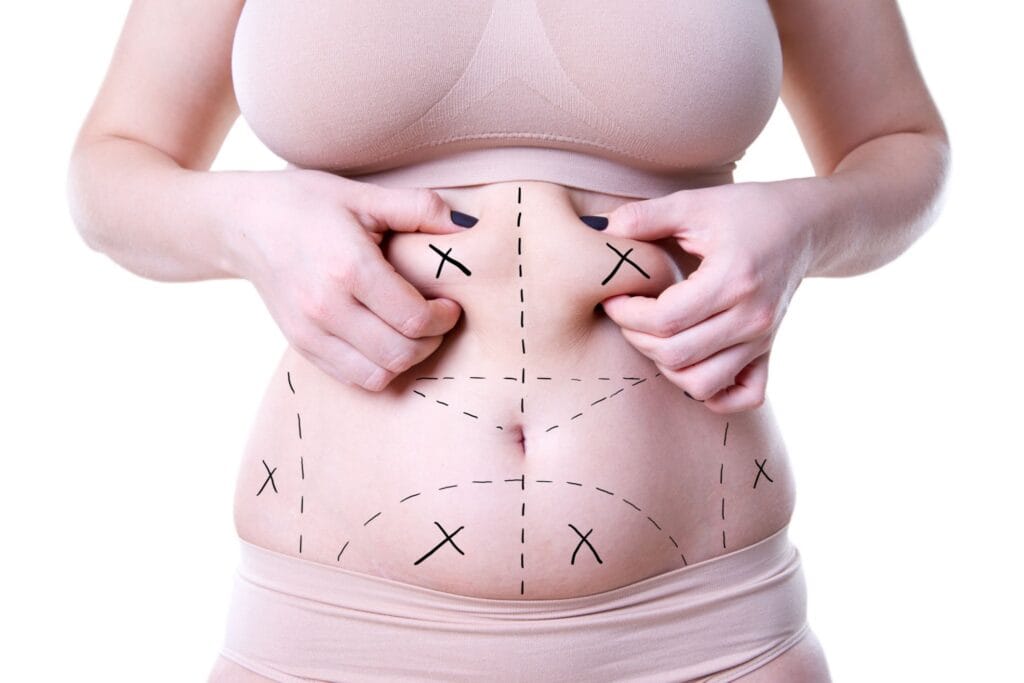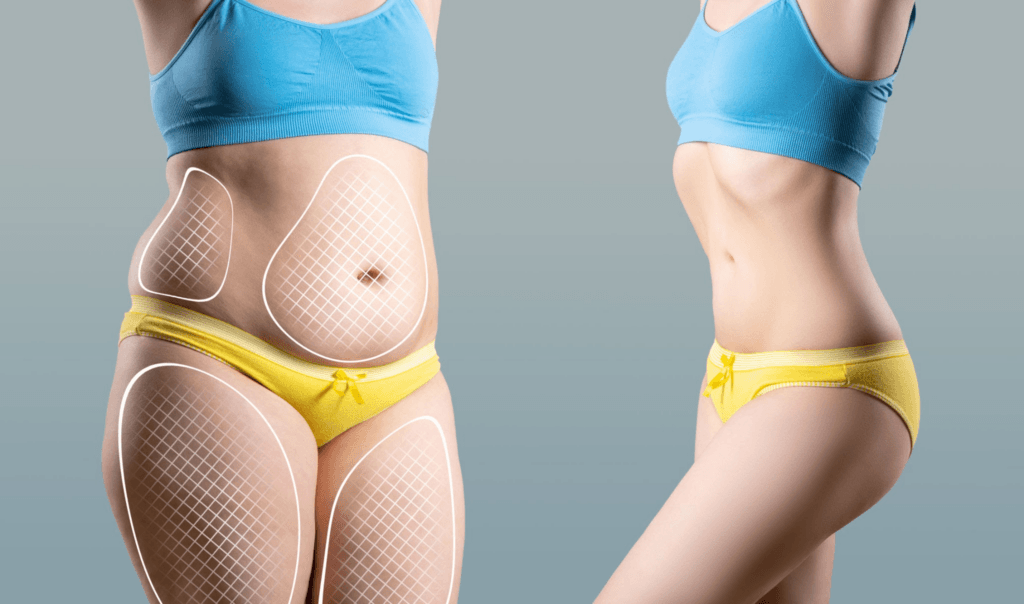Table of Contents
Understanding the 360 Liposuction Procedure
The Comprehensive Approach
360 liposuction, also known as full-body liposuction, represents a significant advancement in body contouring. Unlike traditional liposuction, which often focuses on isolated areas, 360 liposuction targets multiple areas simultaneously, aiming to address overall body proportions and aesthetic harmony. This innovative approach meticulously refines the abdomen, flanks, hips, thighs, and sometimes even the back and arms. It’s not just about removing fat; it’s about sculpting a more aesthetically pleasing physique. The surgeon analyzes the patient’s body from all angles, considering the interplay of curves and contours to achieve a harmonious outcome. The goal is a balanced and sculpted silhouette, enhancing natural contours rather than creating radical changes.
This procedure requires a sophisticated understanding of the patient’s anatomy and body composition. The distribution of fat varies significantly between individuals, and the surgeon needs to tailor the treatment plan accordingly. For example, some patients might have excess fat concentrated around their waistline, while others might have more evenly distributed fat deposits. This is why a one-size-fits-all approach won’t work; each procedure must be customized to the patient’s unique needs.
A Holistic Approach to Body Contouring
This technique demands careful consideration of both the patient’s anatomy and their aesthetic goals. The surgeon evaluates the individual’s body type, fat distribution, and desired outcome. They assess skin elasticity, muscle tone, and the presence of any underlying conditions that might affect healing or outcomes. This comprehensive assessment goes beyond simply identifying areas of excess fat; it involves understanding how these areas interact with other body regions to create the overall silhouette.
During the consultation, the surgeon will discuss realistic expectations, emphasizing that 360 liposuction is not a weight-loss solution. It’s designed for individuals who are close to their ideal weight but struggle with stubborn fat deposits that are resistant to diet and exercise. It’s crucial for patients to understand that 360 liposuction complements a healthy lifestyle; it doesn’t replace it.
Advanced Techniques and Equipment
Modern 360 liposuction procedures leverage advanced techniques and equipment for unparalleled precision and safety. Tumescent liposuction, often a cornerstone of these procedures, involves injecting a special solution (saline, lidocaine, and epinephrine) into the target areas. This solution not only helps to reduce bleeding, bruising, and swelling but also effectively constricts blood vessels and numbs the treatment area, enhancing patient comfort during and after the procedure.
Beyond tumescent, advanced techniques like power-assisted liposuction (PAL), laser-assisted liposuction (LAL), and ultrasound-assisted liposuction (UAL) may be employed. PAL uses a specialized cannula that vibrates rapidly, breaking down fat cells more efficiently and with less effort from the surgeon. LAL uses laser energy to liquefy fat, making it easier to suction away. Additionally, the heat from the laser can help to tighten the skin. UAL uses ultrasound energy to target and break apart fat cells, potentially leading to less trauma to surrounding tissues. The selection of the best techniques depends on the specific areas being treated, the amount of fat being removed, and the patient’s individual needs.

The Critical Consultation Process
A Foundation for Success
A successful 360 liposuction procedure hinges on a thorough consultation. This initial meeting goes beyond a superficial discussion of aesthetics. It’s about establishing a clear understanding of your health status, expectations, and suitability for the procedure. The surgeon meticulously examines your medical history, identifying pre-existing conditions, allergies, and any current medications or supplements that might impact the procedure. They assess your overall health to ensure you are in optimal condition to undergo and recover from surgery. This comprehensive assessment lays the groundwork for a safe and effective procedure, minimizing potential risks and maximizing positive outcomes.
Defining Your Goals and Expectations
During the consultation, open and honest communication about your desired results is key. Clearly articulate your specific aesthetic goals. Pinpoint the areas you’d like to improve and describe your vision for a sculpted physique. The surgeon will guide you through what’s realistically achievable with 360 liposuction, emphasizing both its potential benefits and its limitations. They’ll explain how the procedure can address your specific concerns, whether it’s reducing stubborn fat deposits, improving body contour, or enhancing your overall proportions. This collaborative dialogue ensures that your expectations are aligned with what’s surgically possible and aesthetically desirable.
Thorough Medical Evaluation
The consultation process involves a detailed review of your medical history and a thorough physical examination. The surgeon will assess factors such as:
- Overall Health: This includes reviewing your medical records, discussing any pre-existing conditions, and evaluating your current medications.
- Body Mass Index (BMI): While not the sole determining factor, BMI helps assess if you are within a healthy weight range for the procedure.
- Skin Elasticity: The surgeon will assess the quality of your skin and its ability to retract after the procedure.
- Fat Distribution: The surgeon will analyze the location and amount of fat to be removed to create a balanced and aesthetically pleasing outcome.
This comprehensive medical evaluation ensures that the procedure is appropriate for your health status and helps to minimize any potential complications.
Asking the Right Questions
Don’t hesitate to ask detailed questions. Inquire about the surgeon’s experience with 360 liposuction, their preferred techniques, and their approach to minimizing risks and optimizing results. Request to see before-and-after photos of previous patients to get a sense of their aesthetic style. Discuss potential complications, expected recovery timelines, and the surgeon’s commitment to your well-being throughout the entire process. Remember, this is a collaborative decision, and you should feel completely comfortable and confident in your chosen surgeon and their proposed treatment plan.
Exploring Different Liposuction Techniques
A Variety of Approaches
360 liposuction can incorporate various techniques, allowing for a customized approach based on your unique anatomy and aesthetic goals:
- Tumescent Liposuction: A foundational technique involving the injection of a large volume of a saline solution (often mixed with lidocaine for anesthesia and epinephrine to constrict blood vessels) into the treatment areas. This helps to numb the area, reduce bleeding and swelling, and make the fat easier to remove.
- Power-Assisted Liposuction (PAL): Utilizes a specialized cannula that vibrates rapidly, breaking down fat cells with less effort. PAL often leads to less surgeon fatigue and potentially smoother results.
- Laser-Assisted Liposuction (LAL): Uses laser energy to liquefy fat cells, facilitating their removal. LAL can also stimulate collagen production, potentially leading to tighter skin in the treated area.
- Ultrasound-Assisted Liposuction (UAL): Employs ultrasound waves to break down fat cells before they are removed. UAL can be particularly effective in fibrous areas or in revision liposuction procedures.
The surgeon will select the most appropriate technique (or combination of techniques) based on factors like:
- The amount of fat to be removed.
- The location of the fat deposits.
- The patient’s skin elasticity.
- The surgeon’s experience and preference.
Precision and Control
The surgeon’s skill and artistry play a pivotal role in achieving optimal outcomes. 360 liposuction is not merely about removing fat; it’s about sculpting the body into a more aesthetically pleasing shape. The surgeon must have a keen eye for detail, understanding how to create smooth contours and natural-looking results. They will meticulously sculpt the treated areas, removing fat strategically to enhance your natural curves.
The Importance of Tumescent Liposuction
Tumescent liposuction is often the first step in a 360 liposuction procedure, regardless of whether other techniques are also used. This technique, developed in the 1980s, revolutionized liposuction by significantly improving safety and outcomes. The injected tumescent fluid has several crucial benefits:
- Minimizes Bleeding: The epinephrine in the solution constricts blood vessels, significantly reducing blood loss during the procedure.
- Provides Anesthesia: The lidocaine in the solution provides local anesthesia, often allowing the procedure to be performed under local anesthesia with sedation rather than general anesthesia.
- Facilitates Fat Removal: The fluid helps to separate fat cells from surrounding tissues, making it easier to remove the fat evenly and smoothly.
Anesthesia and Procedure Details
Pain Management Strategies
The type of anesthesia used during 360 liposuction depends on several factors, including:
- The extent of the procedure: Small areas may only require local anesthesia, while larger areas may necessitate general anesthesia.
- Patient preference: Some patients prefer to be completely asleep during the procedure, while others are comfortable with just sedation and local anesthesia.
- Surgeon preference: Surgeons have different approaches and comfort levels with various anesthesia options.
Common anesthesia options include:
- Local Anesthesia with Sedation: The treatment area is numbed, and you are given medication to help you relax.
- General Anesthesia: You are completely asleep during the procedure.
Your surgeon will discuss the best anesthesia options with you, weighing the risks and benefits of each.
Precise Surgical Steps
The 360 liposuction procedure follows a precise sequence of steps:
- Anesthesia: The chosen anesthesia is administered.
- Incisions: Tiny incisions are made in discreet locations, often within natural body folds to minimize scarring.
- Tumescent Fluid Injection: The tumescent fluid is injected into the treatment areas.
- Fat Removal: The surgeon inserts a thin tube called a cannula through the incisions. The cannula is connected to a suction device, which removes the fat.
- Closure: The incisions are typically closed with sutures.
Post-Procedural Monitoring and Management
After the procedure, you will be moved to a recovery area for close monitoring. You may need to wear compression garments to help reduce swelling and support the treated areas. You will receive detailed post-operative instructions, including:
- Pain management: Your surgeon will prescribe medication to manage any discomfort.
- Activity restrictions: You will need to avoid strenuous activity for a period.
- Follow-up appointments: Regular follow-up appointments are crucial to monitor your healing and address any concerns.
Navigating the Post-Operative Recovery
Essential Post-Procedure Care
Post-operative care is crucial for optimal healing, minimizing the risk of complications, and maximizing results. This includes:
- Compression Garment Use: Wearing compression garments as directed by your surgeon helps reduce swelling, supports the treated tissues, and promotes proper skin retraction.
- Medications: Take all prescribed medications as directed, including pain relievers and antibiotics to prevent infection.
- Activity Modification: Gradually increase your activity level as instructed by your surgeon. Avoid strenuous exercise, heavy lifting, and excessive stretching for several weeks.
- Hydration and Nutrition: Maintain adequate hydration by drinking plenty of water and consume a healthy diet rich in fruits, vegetables, and lean protein to support healing.
Managing Potential Discomfort and Swelling
Post-operative swelling, bruising, and some discomfort are normal and expected. These side effects usually peak within the first few days after the procedure and gradually subside over the following weeks. Your surgeon may recommend:
- Pain Medications: Over-the-counter pain relievers or prescription pain medication can manage discomfort.
- Cold Compresses: Applying cold compresses to the treated areas can help reduce swelling and alleviate pain.
- Elevation: Elevating the treated areas, especially when resting, can minimize swelling.
Maintaining Lifestyle Considerations
While 360 liposuction can remove stubborn fat cells, maintaining a healthy lifestyle is key to preserving your results:
- Balanced Diet: Focus on nutrient-rich foods and manage portion sizes.
- Regular Exercise: Engage in regular physical activity to maintain a healthy weight and promote overall well-being.
- Hydration: Drink plenty of water to support skin elasticity and overall health.
Cost Considerations
Variable Pricing Factors
The cost of 360 liposuction is influenced by various factors, including:
- Surgeon’s Experience and Reputation: Highly experienced and reputable surgeons often have higher fees.
- Geographic Location: Costs can vary depending on the city and region where the procedure is performed.
- Anesthesia Fees: The type of anesthesia used will impact the overall cost.
- Facility Fees: The surgical facility’s fees will vary depending on its location and amenities.
- Additional Costs: Factor in costs for compression garments, medications, and follow-up appointments.
A Comparison of Costs
| Country | Metropolitan Area | Average Cost (USD) |
| United States | New York City | 7,000 – 15,000 |
| United States | Los Angeles | 6,500 – 14,000 |
| United Kingdom | London | 5,000 – 12,000 |
| France | Paris | 6,000 – 13,000 |
| Turkey | Istanbul | 4,000 – 10,000 |
(Note: Prices are estimates and can vary based on individual needs and provider charges.)
Conclusion
360 liposuction offers a transformative approach to body contouring, enabling individuals to refine their silhouettes and achieve their aesthetic goals. By understanding the nuances of the consultation, the intricacies of the various techniques, and the importance of a comprehensive recovery process, you can confidently embark on this journey. Consult with a board-certified plastic surgeon with extensive experience in 360 liposuction to determine if this procedure is right for you. Prioritize open communication, realistic expectations, and a commitment to long-term well-being throughout the entire process.
Transform Your Confidence with Surgyteam!
Join the thousands of satisfied patients who have experienced the exceptional care and expertise of Surgyteam’s renowned plastic surgeons. Whether you’re seeking aesthetic enhancements or reconstructive surgery, our dedicated team in Antalya is here to provide you with the highest quality treatment and personalized care.
Book your consultation today and take the first step towards a more confident you!
Frequently Asked Questions (FAQs) About 360 Liposuction
What exactly is 360 liposuction, and how does it differ from traditional liposuction?
360 liposuction, as the name suggests, involves treating multiple areas around the torso in one procedure. It’s like a 360-degree approach to body contouring, often targeting the abdomen, flanks, lower and upper back, and sometimes even the hips. Unlike traditional liposuction, which might focus on just one or two isolated areas, 360 liposuction aims to create a more balanced and harmonious overall silhouette.
How long does a typical 360 liposuction procedure take?
The duration can vary depending on the extent of treatment, but most 360 liposuction procedures take between 2 to 4 hours. Factors influencing the length of the procedure include the number of areas being treated, the amount of fat being removed, and the specific techniques used.
What types of anesthesia are used for 360 liposuction?
The type of anesthesia will be determined based on your individual needs and the extent of the procedure. Options often include local anesthesia with sedation, which numbs the treatment area while you remain relaxed but awake, or general anesthesia, where you are completely asleep during the procedure. Your surgeon will discuss these options with you to determine the most appropriate approach.
What is the recovery like after 360 liposuction?
You can expect some swelling, bruising, and discomfort for a couple of weeks after the procedure. Most patients need to wear compression garments for several weeks to help reduce swelling and support the treated areas. You’ll gradually be able to return to your normal activities, but it’s essential to avoid strenuous activity or heavy lifting for several weeks as your body heals.
Will I have scars after 360 liposuction?
Liposuction does involve making small incisions to insert the cannula (the thin tube used to remove fat). However, surgeons carefully choose incision locations, often within natural creases or folds of skin, to minimize their appearance. Scars typically fade significantly over time and become less noticeable.
How much does 360 liposuction cost?
The cost of 360 liposuction can vary widely depending on factors like the surgeon’s experience, geographic location, anesthesia fees, and the extent of the procedure. It’s best to schedule a consultation with a board-certified plastic surgeon to discuss your specific needs and get an accurate cost estimate.
Is 360 liposuction a permanent solution for fat removal?
While 360 liposuction effectively removes fat cells from the treated areas, it’s essential to understand that it’s not a weight-loss solution or a quick fix. Maintaining a healthy lifestyle through diet and exercise is crucial for preserving your results and preventing weight gain in the future.



